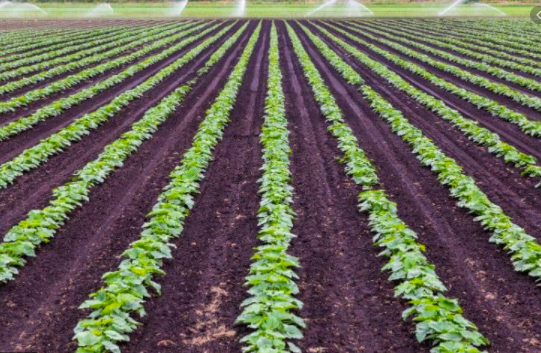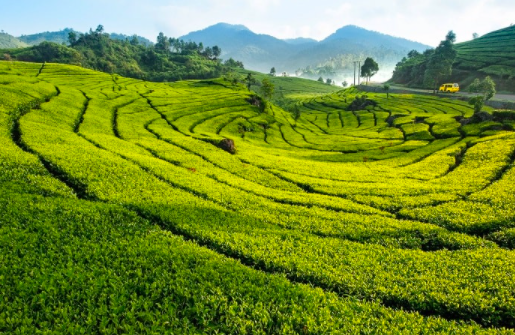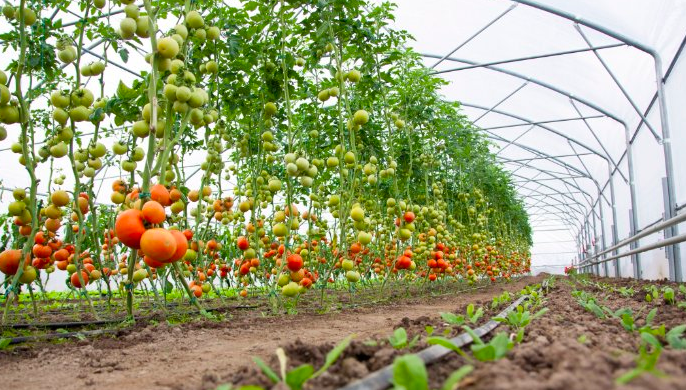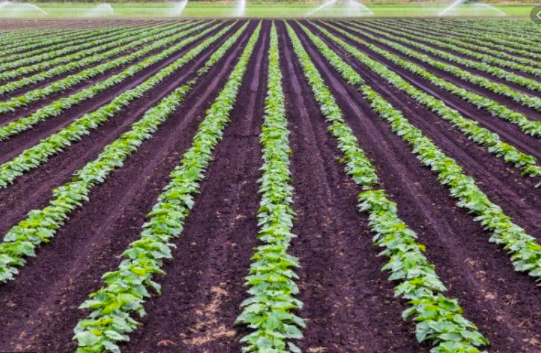Drawing a stark contrast to sustenance or subsistence farming, commercial farming is actually concerned with growing crops or raising livestock in order to sell to final consumers and earn a profit out of such a series of transactions. It is often referred to as agribusiness and is done on a large scale on big farms and agricultural lands.

Some distinctive features of commercial farming or agribusiness include the investment of substantial capital in order to procure heavy machinery to be able to operate the farm on a commercially viable scale, big pieces of land, usage of latest technologies (in the present day, this could mean seed dispersal by using drones) towards ensuring high efficiency and sowing/ rearing high-yield varieties of crops and livestock.
Another common feature of commercial farming in the case of crops is the use of chemical-based fertilizers, insecticides, and other additives; However, with the whole organic debacle gaining momentum, many farmers seem to be moving to more earth-friendly methods of manuring and biomass-based fertilizers to reap fortified crops rather than chemically infused produce with low nutritional value, changing the face of commercial farming as we know it.
Another very important cornerstone of commercial farming is only one variety of crop or livestock being grown or reared in large quantities, as against subsistence, where a variety of foods and crops can be grown in limited space for self-satiating motives. Commercial farming, being technology-empowered, is a lot less labor-intensive than sustenance farming and is not dependent upon monsoon or unpredictable factors for irrigation.
Rather, commercial farming ensures a continuous, reliable, and uniform supply of water for timely and adequate irrigation as per the need of the crops and livestock in question. To put it concisely, resource planning is a definitive feature of commercial farming or agribusiness and it is much more organized than subsistence agriculture.
Types of Commercial Farming
Dairy Farming
Often, milk-bearing animals like cows and even goats are reared by farmers in order to sell the prized white liquid gold to the patrons. This practice of procuring milk that is produced by animals over a sustained period of time, either on a farm or on a commercially-run dairy plant, so as to ultimately sell such milk to intermediate or end consumers is what is commonly known as dairy farming. The most common livestock that is reared for this purpose in India includes cattle, buffalo, yaks, goats, and sheep.
Grain Farming
One of the most widely observed forms of commercial farming in India is grain farming wherein most commonly, wheat, rice, millet, maize, and other such grains are grown at highly mechanized farms. The heaviest of farm equipment is needed to be able to grow such crops at a commercial scale and most grains are a feature of tropical regions viz. Punjab, Haryana, and parts of southern India. However, millet is seen to be a popular grain in the dry and arid regions of Rajasthan as the same requires relatively much less water to grow and thrive.
Plantation Farming
Plantation farming requires the biggest area mass of land to be able to prove commercially viable. These are estates that specialize in cash crops, including cotton, tea, and coffee, opium, sugarcane, cocoa, rubber, some fruits, and oilseeds. In India, there are plenty of tea plantations in the north-eastern and southern region with notable examples including West Bengal, Kerala, etc. Major plantation crops seen in India are cotton, tea, coffee with some instances of rubber and sugarcane as well. Due to the intricate process of picking tea leaves, a lot of these plantations observe an abundance of traditional manual labor rather than big machines during the harvesting season.

Livestock Ranching
Livestock ranching or rearing has been a notable part of India’s heritage across regions. In the olden days, the number of cows a farmer wielded defined his stature in the community. The most common animals and other living beings that are reared as part of commercial farming in India include cattle, bees, fowl, pigs, and fish. Ranching is growing continuously popular as a complementary practice to crop culture in the shape and form of mixed farming due to the many benefits it offers.
Fruit Farming
As self-explanatory as it might be, fruit farming is one of the most profitable forms of agriculture with high selling prices for mature fruits which mostly surpass those of grains and vegetables. Some of the most popular fruits that are grown in India for both exports and domestic sales include Mango, Banana, Apple, Grapes, Papaya, Coconut, Orange, Guava, Pomegranate, Watermelon, Kiwi, Dragon-fruit and Peach. The most exported fruits from India include Mango, Guava, Mangosteens, Bananas, and Papaya, also proving to be some of the most lucrative fruits while Apples take that position in terms of domestic trade and high profitability within India.
Mixed Farming
Often, a symbiotic relationship is carved between crops and livestock on a farm. To leverage the benefits of the two to each other, many farmers grow and rear complement crops and livestock together in order to create a mutually beneficial ecosystem. This practice is what’s widely known as mixed farming.
Some examples of mixed farming within commercial agriculture are Bee-keeping with horticulture or fruit farming. While the actual trees provide the bees with nectar, the bees assist in seed dispersal across the estate. Another example is that of a mixed farm growing crops like wheat or rye and also keeping cattle, sheep, pigs, or poultry. The dung from the cattle serves as fertilizer to the cereal crops in such cases and cattle feed can be the unusable part of the crops.
Horticulture

Ornamental plants and flowering varieties are often grown to sell at extremely high margins in the primary and secondary market due to their optical and olfactory qualities. Horticulture is getting extremely popular in urban commercial farming as well with readily available markets close by. The biggest concern with this kind of farming is that the product must reach the consumer before it starts to wilt, making good quality produce extremely prized among patrons. Some varieties widely grown in India include Marigold, Hibiscus, Pansy, Dahlia, Lotus, Bougainvillea, etc.
We hope this article helped you understand a fair bit about the different kinds of commercial farming. More power to you!
You can find our other blogs HERE!



2 Responses
I want to online training in polyhouse ferming
I want to learn polyhouse ferming